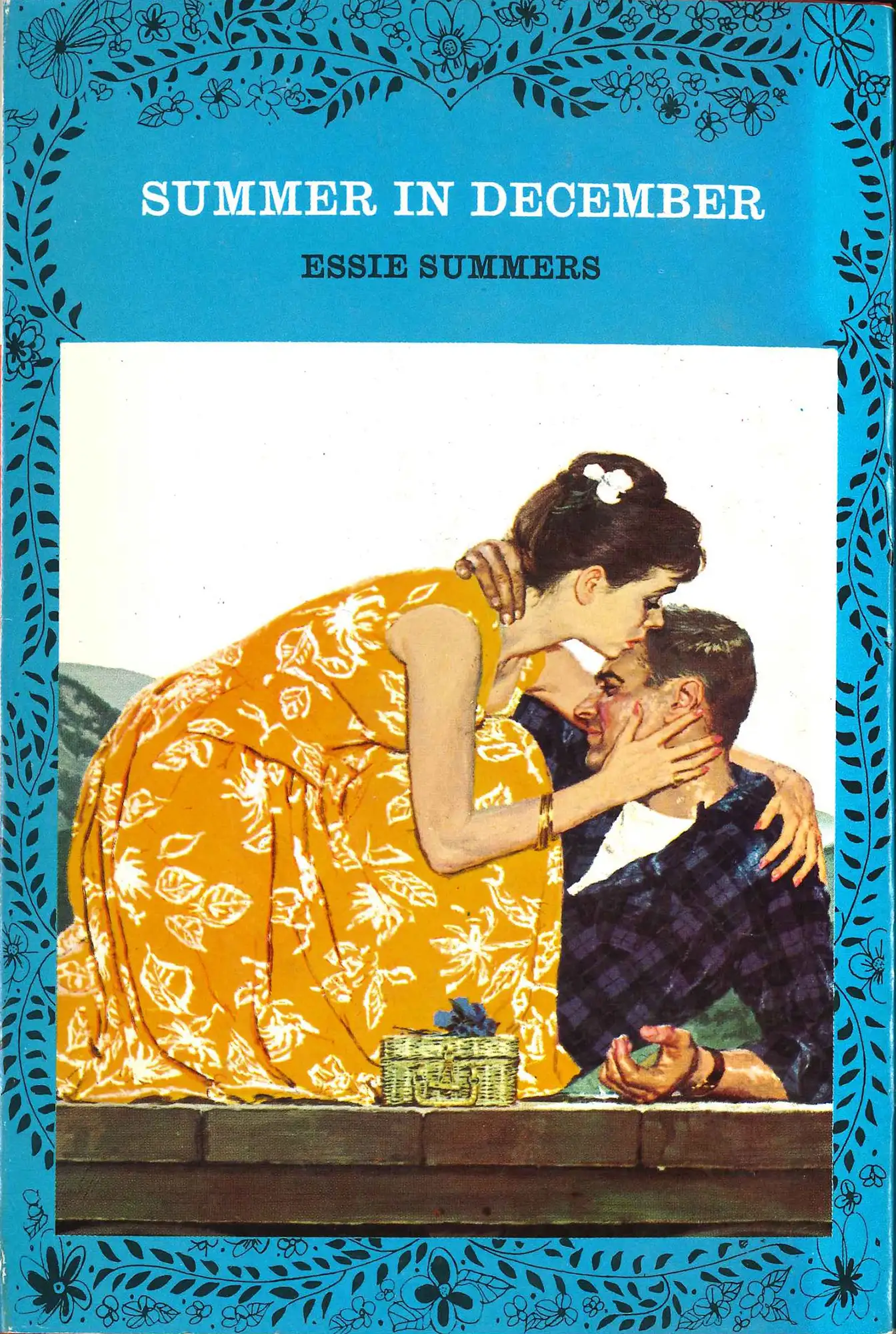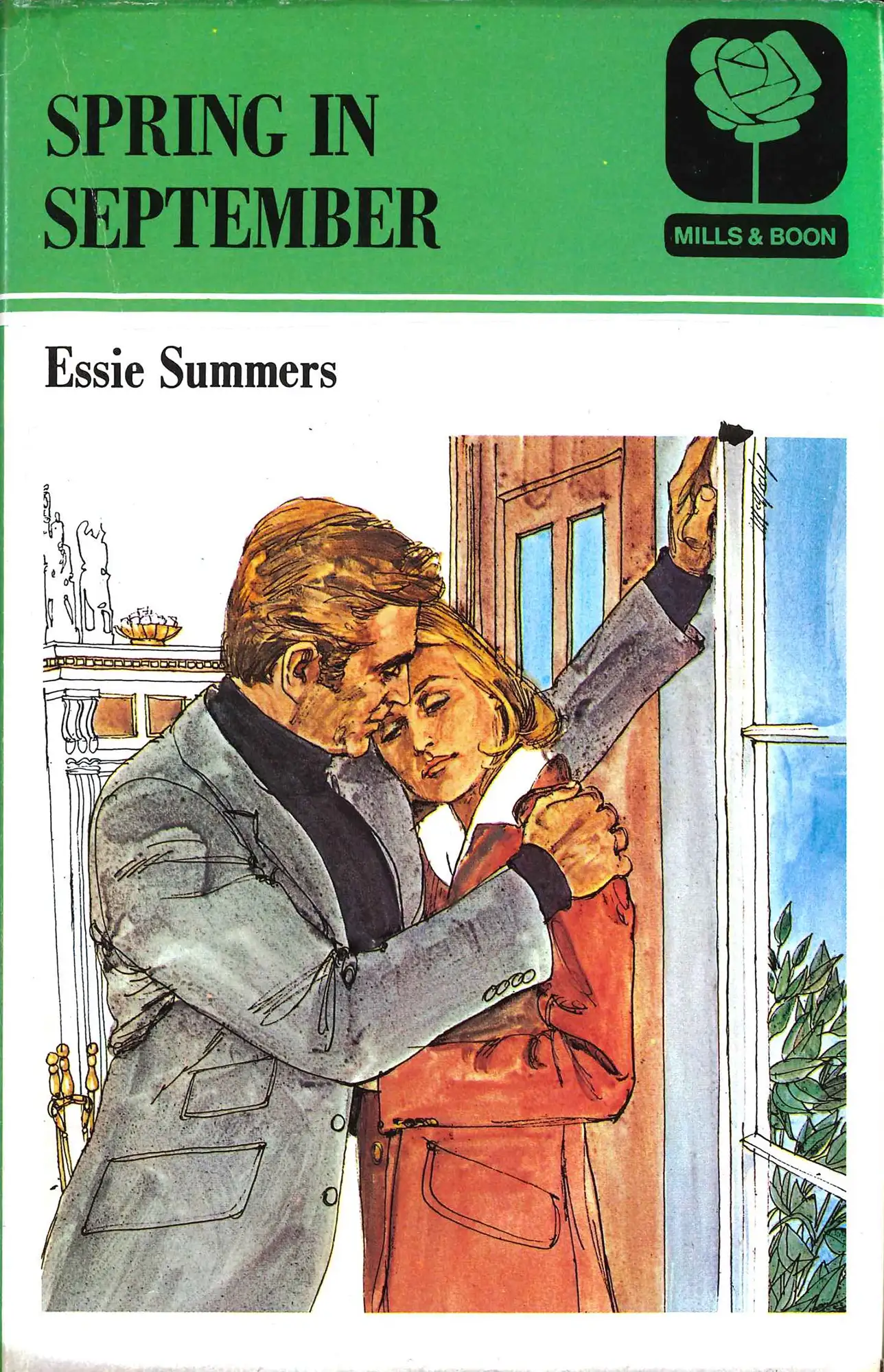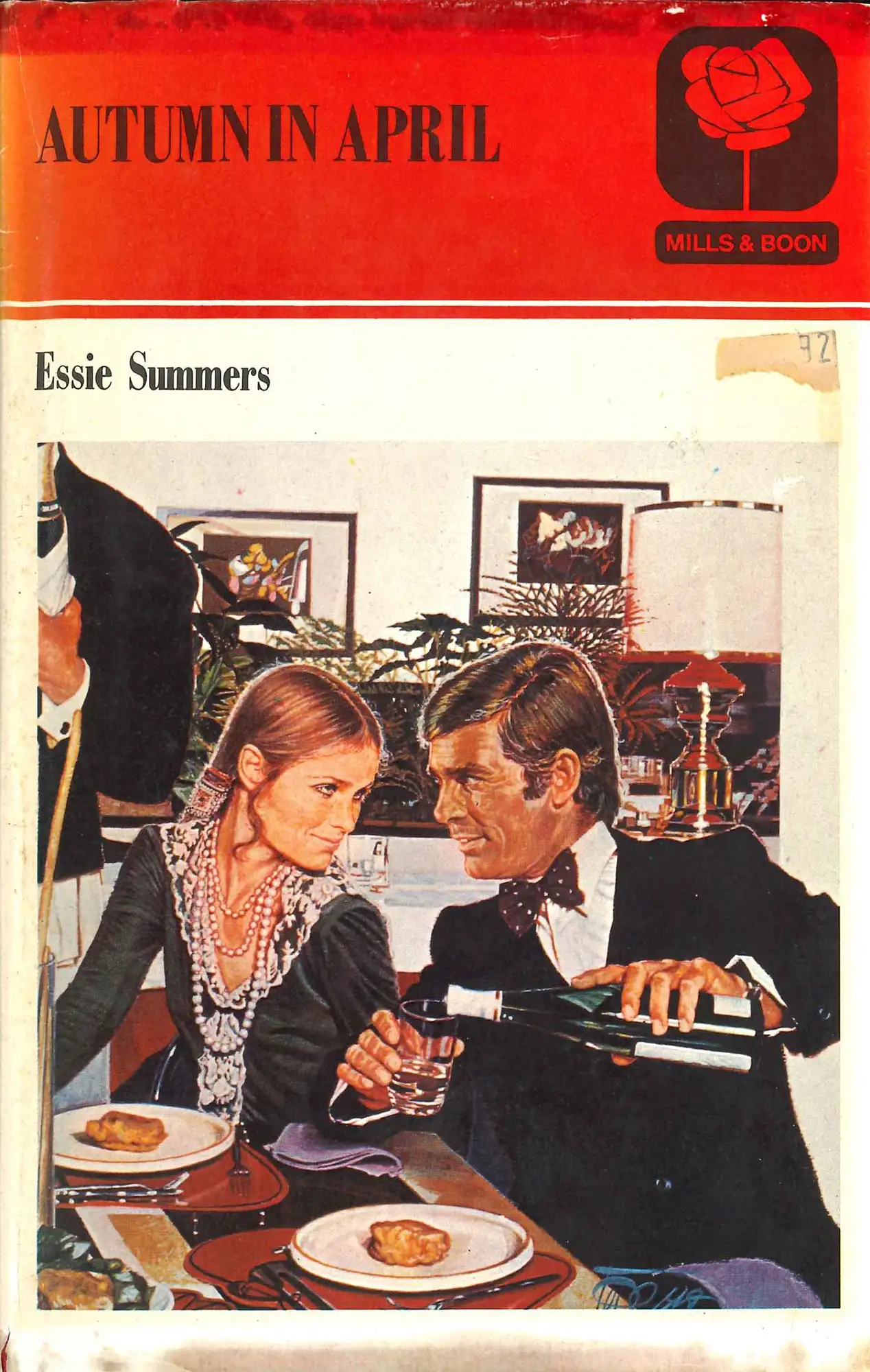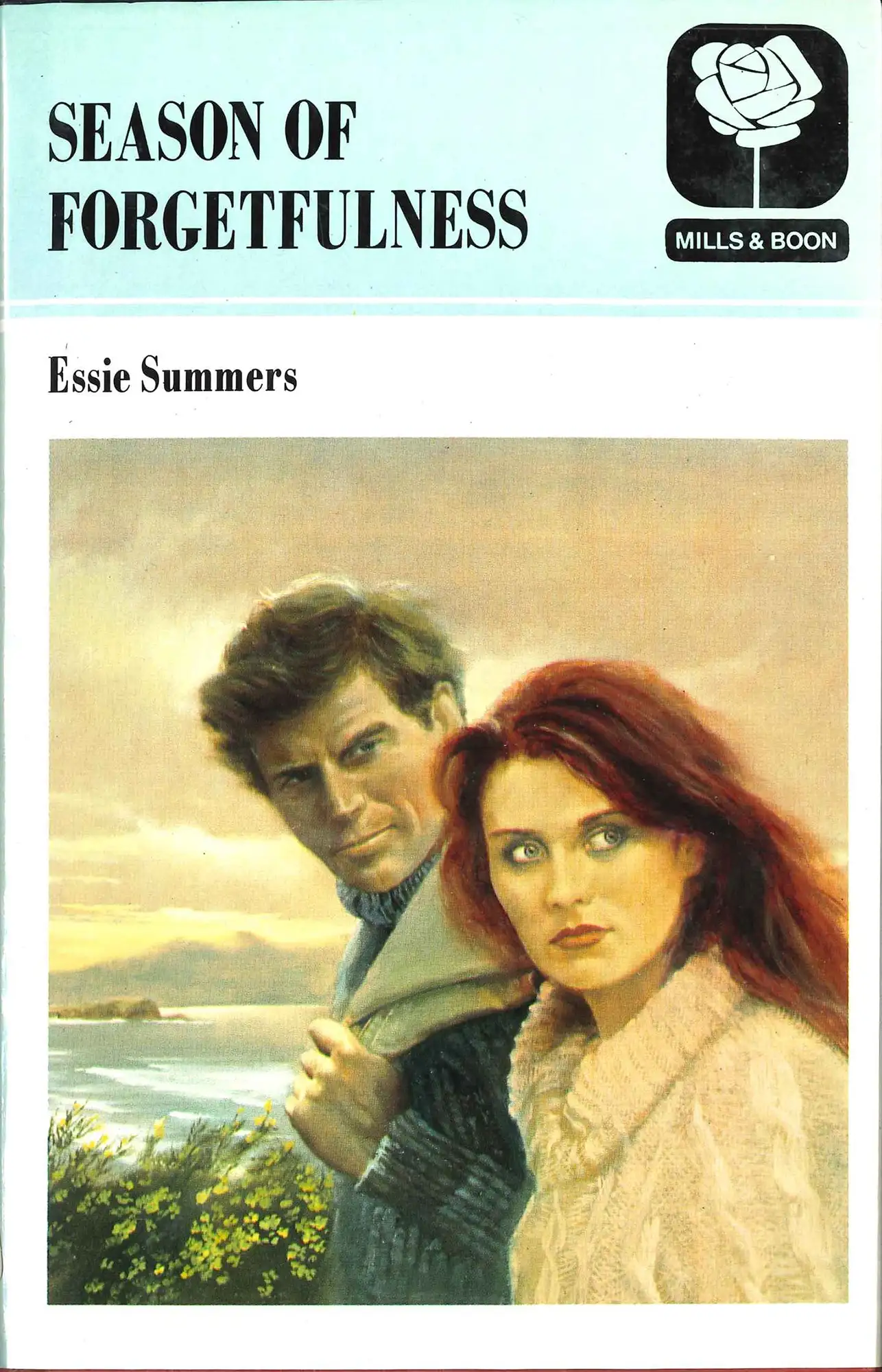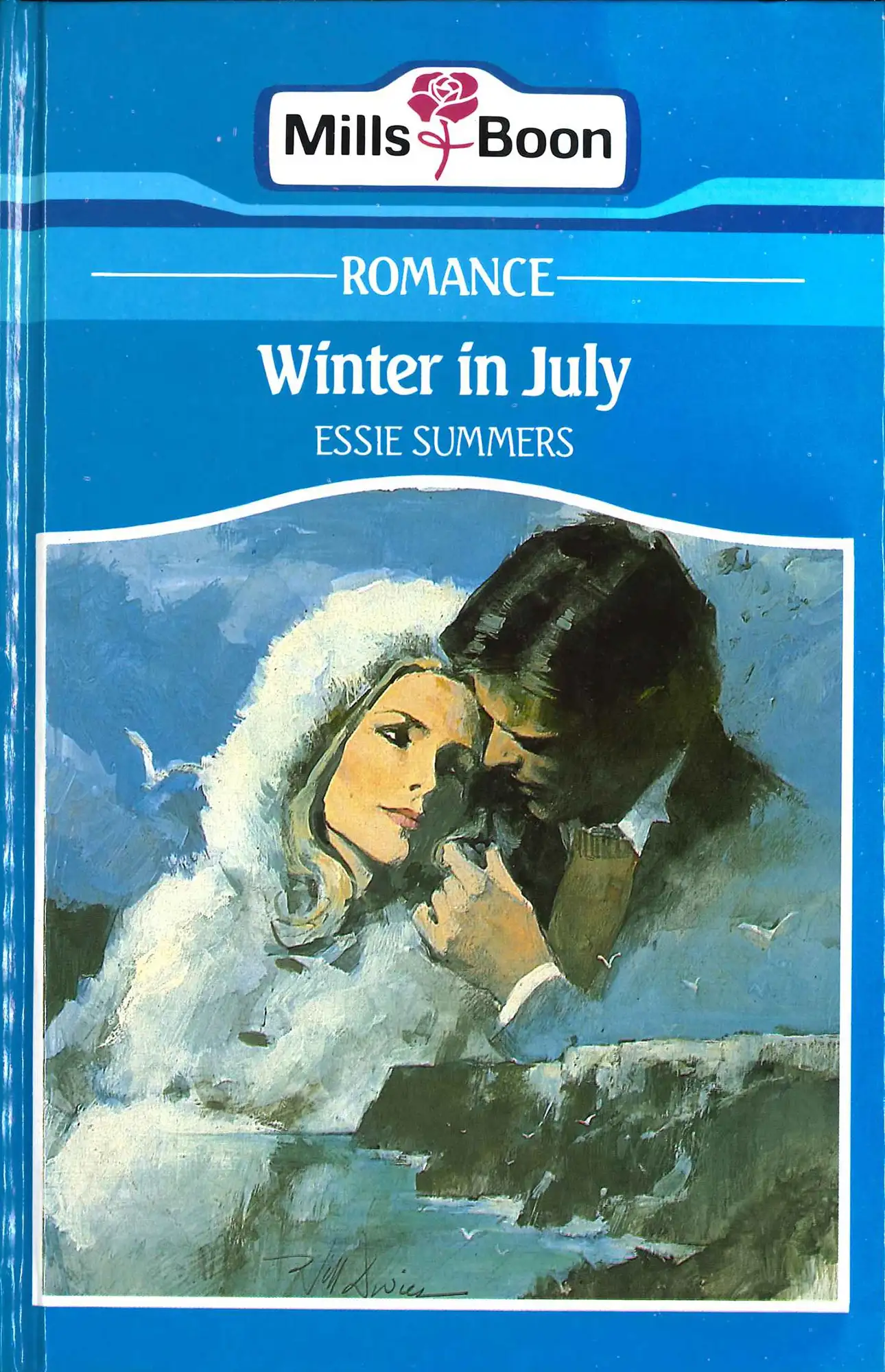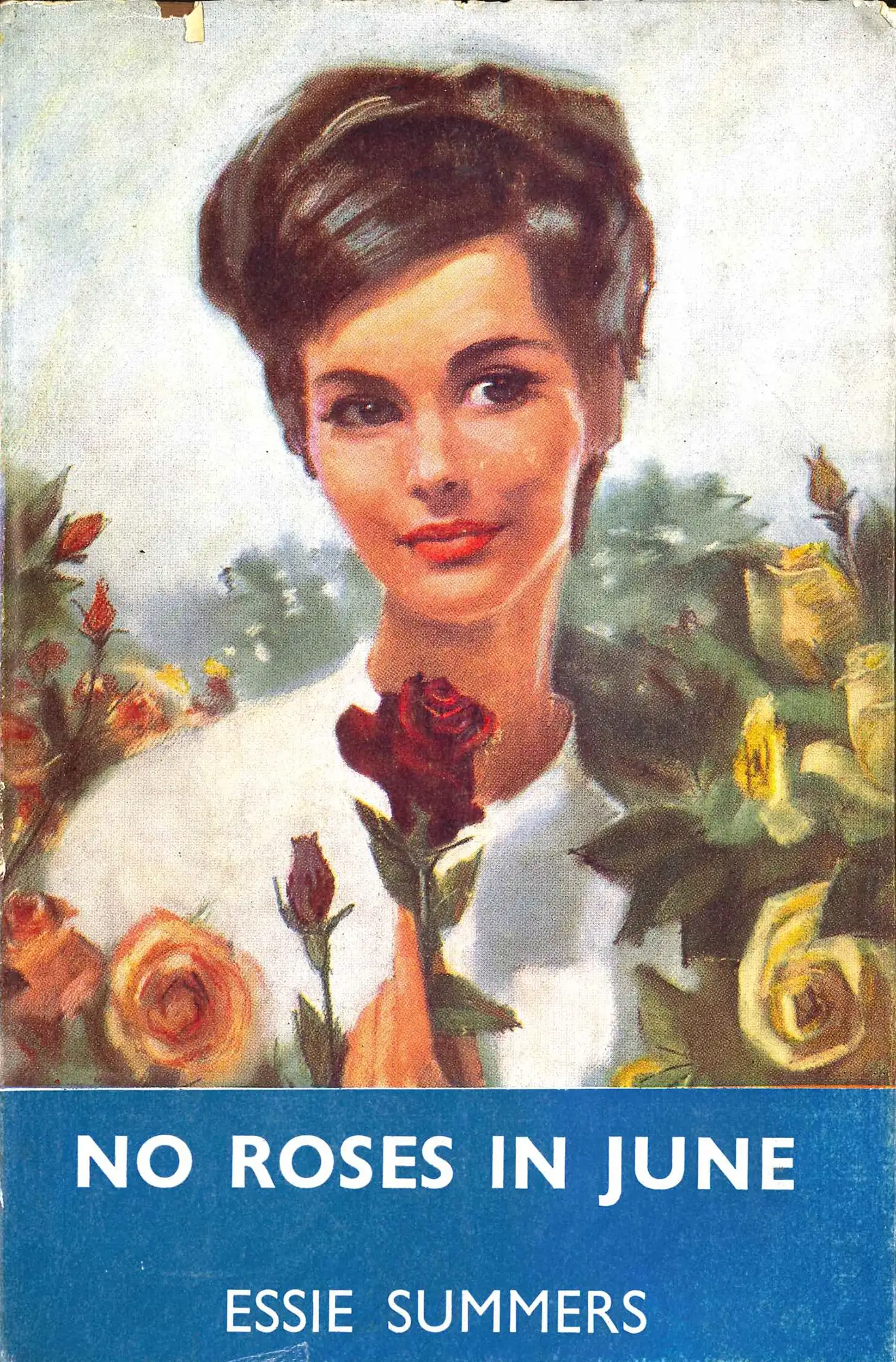
Essie Summers. No Roses in June. London: Mills & Boon, 1961.
From 1957 to 1997 Essie Summers published novels celebrating places she knew in her “topsy-turvy world down under” (Winter in July, 1984). Their locations set them apart from other romance novels. Alan Boon, her publisher, encouraged her to write of places unknown in the northern hemisphere. For such readers, the concept of roses blooming in December suggested exotic, far-flung landscapes, such as Summers illustrated in No Roses in June (1961), amongst other titles.
More than one heroine decides that late winter snow in August and the eponymous Summer in December (1970) exercise powerful attractions. In Spring in September (1978) the setting shifts from autumn in Kent to spring in New Zealand’s Christchurch, and on to the foothills of the Southern Alps. Leading ladies remember New Zealand Septembers with daffodils on the banks of the Avon River, and an autumn that “brought gold and russet to an evergreen land”. Autumn in April (1981) takes readers into Central Otago for the season when “the golden-brown willows trail their fingers in the lake, poplars like flaming torches [stand] proud and tall, and silver birches [are] shivering in the breeze”.
The cycle of seasonal change repeats throughout Summers’ novels. In Season of Forgetfulness (1983) there is hope for a new life, reflecting what spring brings to the natural world. Readers still return to her work, with its appreciation of beautiful landscapes, the power of nature, and affinity with the land itself, rooted in the author’s love of New Zealand.
